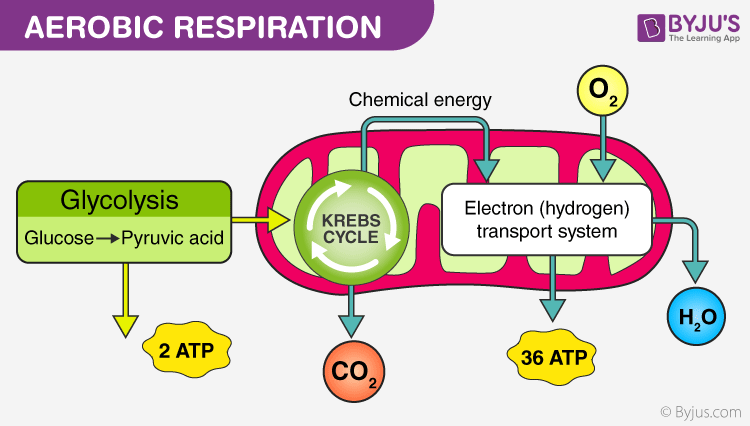The behavior of cells is similar to that of humans in that it needs energy to survive. Cells acquire energy, or ATP, through cellular respiration in the mitochondria. With this energy, cells allow us to move our muscles, repair damaged cells, digest food, and carry out many more critical processes. Today we will learn the steps involved in cellular respiration.
Cellular respiration, by definition, refers to the controlled release of energy by breaking down organic compounds. Glucose is the primary source of the organic compound, but lipids and proteins are sometimes used as well. The major purpose of cellular respiration is to produce adenosine triphosphate (ATP). The phosphate groups, which compose ATP, store potential energy in covalent bonds. This energy is released when ATP is hydrolyzed (ADP+Pi), which is used by the cell to regenerate ATP from its hydrolyzed form.
Anaerobic Respiration

Anaerobic respiration (does not require oxygen) and aerobic respiration (needs oxygen) are the two types of cellular respiration. An example of anaerobic respiration is when yeast respires to produce ethanol and ferment drinks. When yeast is used to process bread, the carbon dioxide causes the dough to rise, and the ethanol evaporates when the bread is baked. Regarding alcohol, anaerobic respiration is used to produce the intoxicating substance. Furthermore, milk can be used to generate yogurts and cheese as bacteria produces lactic acid through anaerobic respiration.
Aerobic Respiration

On the contrary, aerobic respiration is when oxygen is required. One benefit is that this process can lead to more production of ATP. This is because carbon glucose is broken down to carbon dioxide molecule in several steps. Each step releases potential energy, which is then converted into ATP. An instance of aerobic respiration is when pyruvate is broken down into water and carbon dioxide along with a substantial amount of ATP.
Respirometer

A respirometer is a device used to measure the rate of respiration. The rate is measured as cellular respiration produces carbon dioxide and water with oxygen. The following depicts the processes of applying a respirometer:
- Living specimen is placed inside a sealed container
- Carbon dioxide production is measured with a data logger
- After alkali is included to absorb carbon dioxide, oxygen consumption is measured as a change in pressure
Several factors affect respiration rates, including temperature, light, age, and hydration. To be more specific, an increase in carbon dioxide levels indicate an increase in respiration, while a decrease in oxygen levels indicate an increase in respiration.
Works Cited
“Brent Cornell.” Lung Disorders | BioNinja, ib.bioninja.com.au/standard-level/topic-2-molecular-biology/28-cell-respiration/.
Leave a comment